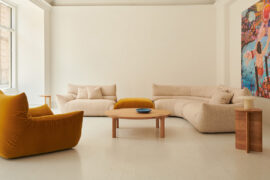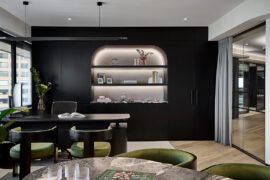Tania Spława-Neyman is a sessional lecturer at the School of Fashion & Textiles and a PhD candidate at the School of Architecture & Design, RMIT University

June 10th, 2014
Words by Tania Spława-Neyman
I consider myself lucky. I am affiliated with an educational institution that values design for its own sake, fostering innovative and not always commercial modes of designer-ly thinking. This could be seen as flying in the face of the needs of students, who want to be appropriately equipped for their future workplace, and the needs of industries that will become future employers. There is some legitimacy to the common criticism that students graduating from design programs are unfit for employment and simply too many in number. Certainly, as a fresh design degree graduate in the mid-nineties, understanding where I might fit within the design industry was difficult, an experience shared by my peers, many who are now employed in fields unrelated to their degree.
From my current perspective, as a design lecturer for the past ten years, I see this experience being re-enacted by contemporary graduating students. For those students who are employed in their field there is an obligatory on-the-job learning of skills and systems, often specific to the business or practice within which they are employed. This reveals the difficultly that educational institutions face when attempting to impart industry relevant skills through their curriculum, particularly when the possible career paths related to any design degree are unquantifiable and frankly, impossible to predict, especially within the present ever-changing, techno-centric world. This causes me to ponder – what is it that design education teaches?
My concurrent viewpoint as a higher degree student undertaking a PhD through practice-based research, allows me to see the role of the university in a quite different light. Design within educational institutions and specifically within academia has the privileged position of being able to work outside the constraints of the commercial world, and so being is obligated to explore possibilities outside, or even critique the current status quo. The most fundamental truth, that I believe is crucial for design education to teach, is that design makes futures – different futures, futures that are more desirable (hopefully) than what we presently experience. The responsibility that accompanies design as both a value producer, and as the creator of future scenarios must be embedded within the mindset and practice of designers to be.
I believe the abilities of every student completing study in design must span these three areas:
This is the direction in which I would like to see design education going, a pathway that is surely within the true spirit of design.
Tania Spława-Neyman is a sessional lecturer at the School of Fashion & Textiles and a PhD candidate at the School of Architecture & Design, RMIT University
RMIT
rmit.edu.au
INDESIGN is on instagram
Follow @indesignlive
A searchable and comprehensive guide for specifying leading products and their suppliers
Keep up to date with the latest and greatest from our industry BFF's!

For Aidan Mawhinney, the secret ingredient to Living Edge’s success “comes down to people, product and place.” As the brand celebrates a significant 25-year milestone, it’s that commitment to authentic, sustainable design – and the people behind it all – that continues to anchor its legacy.
The new range features slabs with warm, earthy palettes that lend a sense of organic luxury to every space.

A curated exhibition in Frederiksstaden captures the spirit of Australian design

London-based design duo Raw Edges have joined forces with Established & Sons and Tongue & Groove to introduce Wall to Wall – a hand-stained, “living collection” that transforms parquet flooring into a canvas of colour, pattern, and possibility.
Last Thursday 18 June members of the A+D community came together to celebrate the latest INDESIGN LUMINARIES, bernabeifreeman, at the Living Edge Studio in Surry Hills.
The transformation of a French Riviera inspired eyesore into a contemporary, mixed-use development – is set to change the face of Bondi Beach… again
The design hunt continues with the new habitusliving.com website – everything you love about Habitus magazine and more… Sign up to receive updates as we get ready to launch. We’ll also be offering some great prizes in the coming weeks, so stay tuned. You can follow habitusliving.com on twitter as well – twitter.com/habitusliving
The internet never sleeps! Here's the stuff you might have missed

Reuse, resourcefulness and material transformations bring unexpected stories to Arup’s new Brisbane office, designed by Hassell.

Setting the tone for McCormack’s HQ is Elton Group’s Eveneer WoodWall and Eveneer Raw in Ravenna – wrapping walls, ceilings and bespoke joinery in a dark, matte elegance. The seamless pairing delivers a cohesive, high-performance finish that anchors Studio 103’s luxurious, hotel-inspired workplace design.